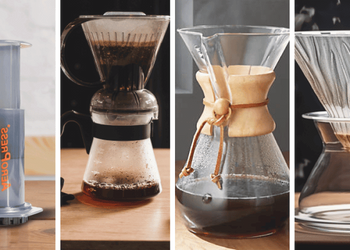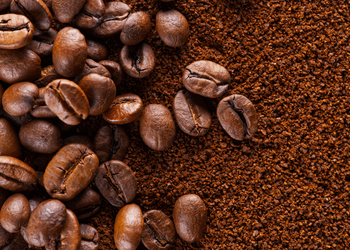
What is French Roast Coffee - Easy Guide

Bonjour! If you're a java junkie, you certainly must have come across the much-hyped coffee roast - French roast coffee. We know light, medium, and dark roasts, but what is French roast coffee? Well, we are all geared up to find that out!
We are aware that for centuries, Europeans have repeatedly influenced the way the world drinks coffee. They sure have the most interesting brewing methods, but did you know that they also make the darkest roasts?
Whether it’s French roast coffee, Italian roast, or Vienna roast, they are all super dark, and quite treasured in the world of coffee. But if you have to pick the darkest roast of them all, it’s the French roast. Let’s step into the darkness and get to know this coffee better.
What is French roast coffee?
If you’re assuming that French roast coffee is grown in France, let us stop you right there. The term ‘French roast’ refers to the color of the roast and not its origin. French roast coffee is essentially a type of dark roast.
The style of roasting originated in France and got very popular throughout Europe in the 19th century. Coffee beans from anywhere in the world can be roasted using the French roast style and can be called so. Being on the darker end of the scale, they are usually the color of dark chocolate.

What does French roast taste like?
There is nothing delicate about the taste of French roast coffee. It has an overpowering smokiness that some people enjoy, while others don’t. The flavors in darker roasts like the French roast are defined by the process of roasting more than the bean’s natural state. You don’t taste the organic flavors of the beans as these are driven off by the high roasting temperature. Such intense roasting brings the focus on aspects like aroma, sweetness, and bitterness.
Some describe it as having an almost ‘burnt’ taste with sweet and smoky undertones. The mouthfeel is particularly light and watery, which is again a preference. All in all, if you’re heading for a strong morning jolt, this coffee will do it for you.
Roasting method
To get the ultra-dark roast that French roast coffee is, the beans are left to roast past the first crack. During this time, the beans’ cell walls will begin to collapse, resulting in a second crack in the beans releasing oils on the exterior of the beans. This gives these beans a shiny coat. Roasting is usually continued till the internal temperature of the beans reaches 240 C or 465 F. At this point, they are removed from the heat, as any more exposure to heat past this point will result in burnt beans.

Quality French roast
During French roasting, since most of the flavor of the coffee bean is burnt out during the long roasting process, most roasters prefer using Robusta beans which are less costly and considered to be inferior in taste, as opposed to the fine-flavored Arabica beans. Basically, the quality of the beans takes a secondary spot when it comes to French roast coffee giving more importance to the roasting.
Also, French roast coffee tends to lose its freshness faster than lighter roasts as the natural oils don’t stay trapped inside the beans like in the latter. It is recommended to buy smaller portions of French roast coffee and store them in an air-tight container.
Darker roasts
While most coffee experts believe French roast coffee to be the darkest roast, there is some tussle between French roast and Italian roast. Also, some companies produce ‘Dark French Roast’ coffee which has a more charred flavor than the already smoky French roast and is oilier. But if you don’t want to break your head over it and want a widely-accepted answer, then we would go with French roast to be the darkest roast available.

Lighter roasts
Viennese roast, Continental roast, and Italian Espresso roast coffees are all roasted post the second crack and thus fall in the same category of dark roasts as French roast coffee. However, as established earlier, the French roast is the darkest of them all. If you want a cup of French roast coffee with reduced intensity, you can explore these slightly lighter roasts.
Brewing methods
Traditionally, French roast coffee is made using a drip coffee maker; however, it can also be prepared using an espresso machine with finely ground beans.

Experts say that immersion brewing works best for French roast coffee as it allows the brewer to have some control over the extraction. Thus, cold brew, French press, and Aeropress are great ways to prepare French roast coffee. If you want to brew an excellent cup, keep these things in mind -
- Use a coarse grind - By grinding coarsely, less bean surface is exposed to the water, reducing bitterness and extraction time.
- Let your water cool down - Allow the kettle to sit for a few minutes before making the coffee. A temperature between 190°F and 195°F is recommended.
- Avoid over-stirring and causing the grounds to break down further by over-agitating. All of the grounds should be in contact with the water, but sudden extraction should be avoided.
- Shorten your extraction time - As the burnt flavors dissolve slower, you can cut the extraction short to retain more of the sweeter tones in the final brew.

I am a coffee aficionado based in Seattle. I have devoted my passion and expertise to perfecting the art of home coffee brewing. I became known for my exquisite pour-over and espresso creations. I source coffee beans from local roasters and explores ...



